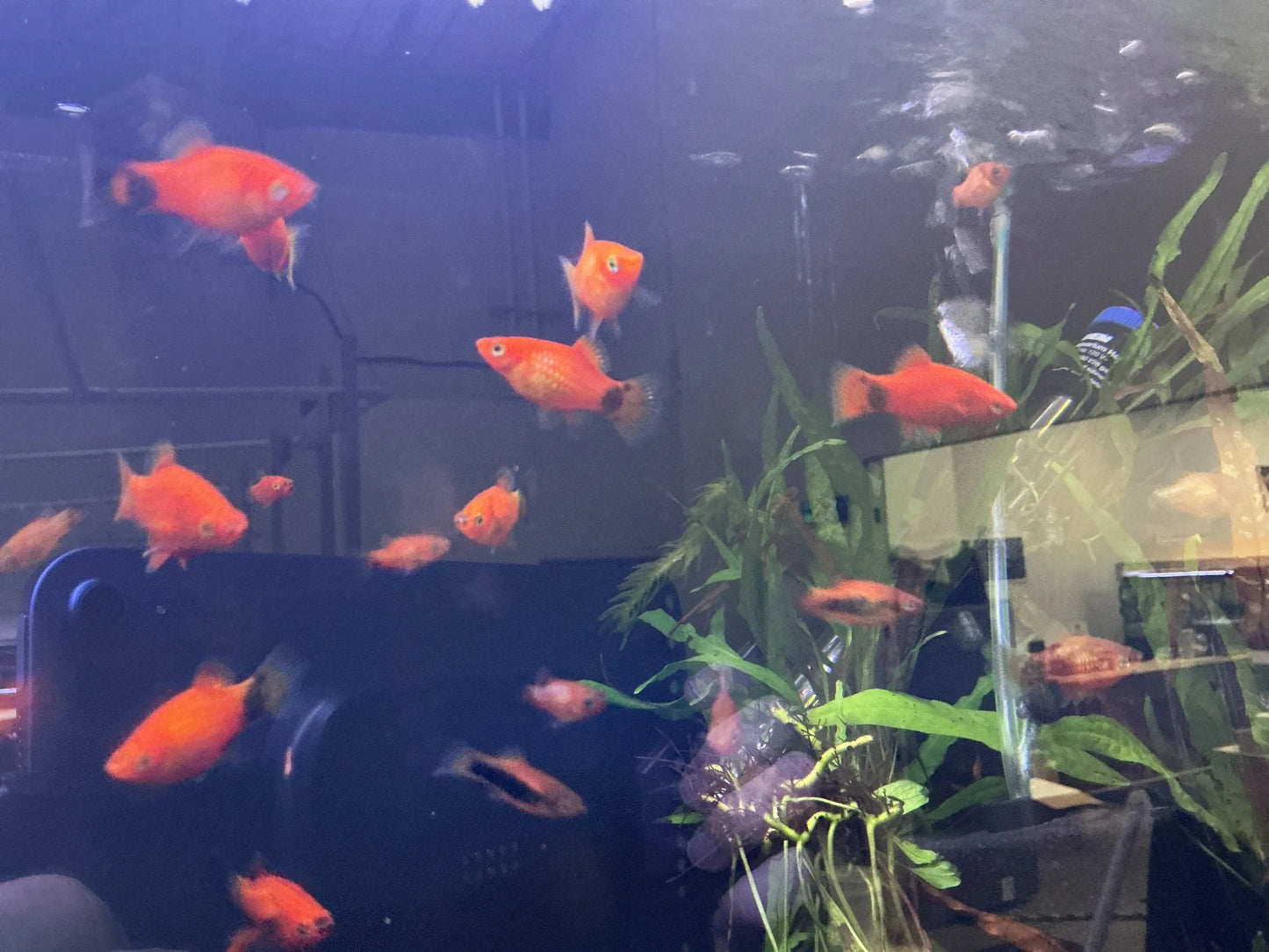Red Mickey Mouse Platy (Xiphophorus maculatus) – Peaceful Colorful Livebearer
Red Mickey Mouse Platy (Xiphophorus maculatus) – Peaceful Colorful Livebearer
15 in stock
Couldn't load pickup availability
🐠 Red Mickey Mouse Platy (Xiphophorus maculatus) – Peaceful Colorful Livebearer
The Red Mickey Mouse Platy is a vibrant, easy-to-care-for livebearer loved for its bright red coloration and unique “Mickey Mouse” pattern near the tail. Hardy and peaceful, these platys make a wonderful addition to community aquariums—adding both charm and color with their active, friendly behavior.
Perfect for beginners and experienced aquarists alike, the Red Mickey Mouse Platy thrives in planted aquariums and mixes well with other peaceful livebearers like guppies, mollies, and swordtails.
🌟 Key Features
✨ Bright Red Coloration – Adds a pop of color to any aquarium
🐭 Iconic Mickey Mouse Marking – Tail pattern resembles the famous silhouette
🌿 Peaceful Community Fish – Ideal for groups and mixed setups
💧 Hardy & Adaptable – Great choice for beginners
🐟 Livebearing Species – Females give birth to free-swimming fry
⚙️ Care Guide
- Scientific Name: Xiphophorus maculatus
- Common Name: Red Mickey Mouse Platy
- Origin: Central America
- Temperament: Peaceful
- Adult Size: 2–2.5 inches
- Diet: Omnivore – flakes, pellets, frozen bloodworms, brine shrimp, and vegetable matter
- Tank Size: 15+ gallons recommended
- Water Temperature: 72–82°F
- pH Range: 7.0–8.2
- Lifespan: 2–3 years
💡 Tank Setup Tips
- Keep groups of 5 or more for social comfort.
- Add live plants like Hornwort, Java Fern, or Anubias for natural cover.
- Maintain gentle filtration and regular water changes.
- Provide hiding spots for fry if breeding occurs.
❓ FAQ
Q: Are Red Mickey Mouse Platys peaceful?
A: Yes! They’re peaceful, active, and make great additions to community tanks.
Q: Can they live with other livebearers?
A: Absolutely—pair well with guppies, mollies, and swordtails.
Q: Do they breed easily?
A: Yes, females give birth to live fry every 4–6 weeks. Provide plants or a breeder box for fry safety.
Q: What do they eat?
A: They’re omnivorous—offer flakes, pellets, and frozen or plant-based foods for balanced nutrition.
Q: Are they good for beginners?
A: Definitely! Hardy, colorful, and social—perfect starter fish.



